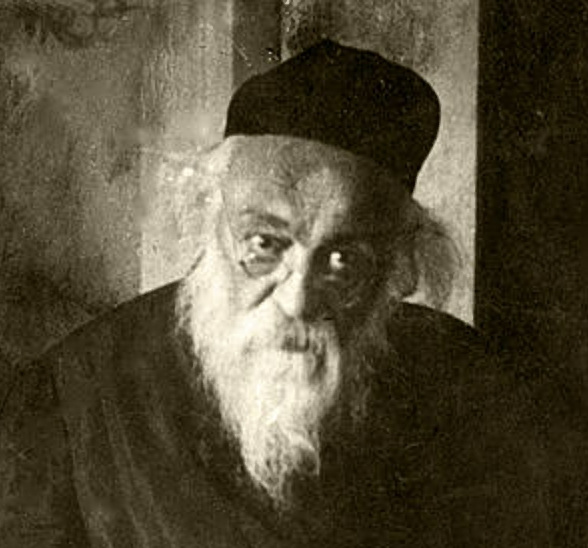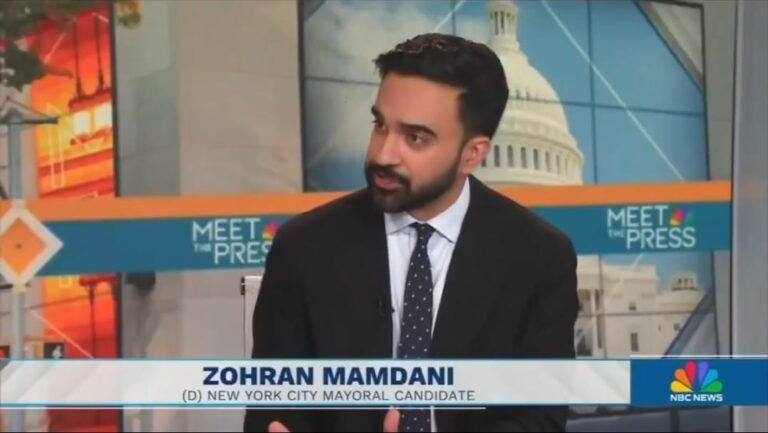by Rabbi Yair Hoffman
Today, the 21st of Av, is the yahrtzeit of Rav Chaim Soloveitchik zatzal (1853-1918). For many people, Rav Chaim is their great-grand Rebbe. One of my Rebbeim (Rav Avrohom Kanarek zt”l) was a talmid of Reb Boruch Ber Leibowitz zt”l, one of the premier talmidim of Rav Chaim.
Rav Chaim was born in the town of Volozhin, where his father, the Beis HaLevi was one of the Maggidei Shiurim. In 1865, his father took a position as the Rav of Brisk, a position that Rav Chaim took over after his father’s passing. He was a very popular Maggid Shiur in the Volozhin Yeshiv and had numerous Talmidim there that went on to become Gedolei Torah all over the world. He had four children: 1] Rav Yisrael Gershon, 2] Rav Moshe, 3] Rav Yitzchak Zev and 4] , a daughter named Sara Rasha, who married Rav Tzvi Hirsch Glickson hy”d.
Rav Chaim was also known as the father of the Brisker method. Below are four of the more famous examples of the Brisker methodology:
- Siman versus sibah or effect versus cause: As an example in the medical world – a friend of mine once had excessive muscles to the extent that he had no feeling in his fingers. The doctor thought he had solved the problem by cutting out the muscle tissue under his wrist. A few week’s later, it came back again. The doctor had thought the muscle tissue was the cause – it was really an effect of an over-active pituitary gland. When that gland was cut in half with an operation through the nose – the problem was resolved.
- Active versus passive: Often there may be a difference between a passive violation and an active violation.
- Tzvei dinim or two components: Often there are two or three components in a Talmudic concept where some people think that there are just one.
- Cheftza versus gavra or a prohibition (or Mitzvah) on the object versus the person.
L’zaicher Nishmaso, we present some of his Torah below, as translated by this author:
FIRST PIECE FROM RAV CHAIM SOLOVEITCHIK’S WRITINGS
It is found in Chidushei Rabbeinu Chaim (on Rambam Yesodei HaTorah 5:1 – the first piece). Rav Chaim Soloveitchik’s writings were published in 1936 – some 18 years after his passing. The issue he discusses deals with the following question:
What does one do – when you are told to violate one of the three cardinal sins of Judaism – idolatry, adultery [and other arayos], or to take the life of another – or your life will be forfeit?
LIVE BY THE TORAH – NOT DIE BY IT
Generally speaking, the Torah tells us “veChai Bahem – and you shall live by the Torah.” Our sages teach (See Yuma 85b and Sanhedrin 74a) – to live by and not die by them – all except for the three cardinal sins. When faced with these three sins – we must never violate them, even if our life is at stake.
THE THREE EXCEPTIONS
The Gemorah in Sanhedrin tells us that we must let ourselves be killed rather than violate these three sins.
- Idolatry’s exception is derived from the Shma: And you shall love Hashem your G-d with all your soul – bechol nafshecha.
- Arayos is derived from a Hekesh to the taking of life – (the hyper-text like connection which applies the laws of one topic to another – Dvarim 22:26). Just as one is allowed to kill a would-be murderer chasing someone – so too may one kill a would-be rapist chasing someone. Since this halacha is true, the exception to “and you shall live by them” is also true.
- And where is the exception of “taking of life” derived from? – It is a compelling logical rationale, concludes the Gemorah in Sanhedrin: Who can say that your blood is any redder than his [the victim’s]? The Gemorah quotes Rava who gave this answer to someone who asked him about how his local temporal administrator, Marei Durai, told him to kill others or he will kill him.
ESTHER’S RELATIONSHIP WITH ACHASHVEIROSH
The Gemorah in Sanhedrin mentions another caveat – that when the matter is in public – one must also give up one’s life for one of the non-cardinal sins on account of the idea of Chillul Hashem. The Gemorah brings up its original prima facie understanding of the case of Esther as a question on this caveat – declaring that it too should be considered a public matter. One answer that the Gemorah gives is that of “Karka Olam” – that Esther was only violating this sin passively.
TOSFOS’ QUESTION
The Baalei Tosfos in Sanhedrin (74b “Veha”) ask that Esther’s sin should have been considered full-fledged Gilui Arayos – (exception #2 to vechai bahem) and she should have given up her life – even if it wasn’t public! The Baalei Tosfos answer that for the issue of Exception #2 (and thus exception #3 as well) – the Gemorah was well aware that the notion of “Karka Olam – the passive violation” – applies to both of these exceptions and therefore only chose to ask from the private/public factor.
RAV CHAIM’S VIEW OF TOSFOS
Rav Chaim Soloveitchik states that according to the view of Tosfos – one does not have to give up one’s life in a case where the killing of others is a passive violation. In other words, if the official is about to use you as the murder weapon – throwing you on top of the victim and killing him – you are not obligated to give up your life to prevent it. Indeed, in such a case, one can make the opposite argument – why is the victim’s blood any redder than mine if I am not actively violating anything?
In applying Rav Chaim’s understanding of Tosfos to our case, an argument could well be made that the Nursing Home Administrator is not directly and actively killing his residents and his staff by following the March 25th Executive Order. It could be said, therefore, that passively killing them may not fit into the exceptions to vechai bahem. On the other hand, the Nursing Administrator could leave his job – and thus, perhaps, altogether avoid the question.
RAV CHAIM’S VIEW OF THE RAMBAM
Rav Chaim, however, points out that the Rambam learns differently and nowhere does he draw any distinction between an active violation and a passive violation. He makes no mention of karka olam – neither in Arayos nor in the taking of another life.
THE TWO VIEWS OF “WHY IS YOUR BLOOD ANY REDDER?”
Rav Chaim presents two possible understandings of the concept of “why is your blood any redder than his” within the Rambam. The first view is that one must always remain passive. The second view is that there is always an obligation to give up one’s life rather than cause the death of another – even if the causing is only indirect.
PROVING THE SECOND VIEW
Rav Chaim cites a Gemorah from Bava Metziah 62a to prove only that when saving a life we apply the dictum of VeChai Achicha Imach – that your life takes precedence. There, the case is where two people are in the desert and one has a container of water but it is not enough for both to survive. The pasuk of veChai achicha imach is applied to say only when you will also live are you obligated to give him the water. It is not a case of murder, however. We see, therefore, that the idea of your life taking precedence – does not apply, however, when dealing with the prohibition of actually taking of life of another person – even if it were passive.
SECOND PIECE
The Chidushei Rabbi Chaim, his classic work, was published in 1936 by his children. There was another collection of his Torah thoughts which were known as the “stencils” or the tagbuch which have appeared sporadically throughout the years. The bulk of this work was published from Rav Chaim’s original hand in 5778. The piece below is translated from this latter work.
A BRIS WITHIN 8 DAYS VERSUS A BRIS AT NIGHT
The Ramah (YD 262:1) rules that if a baby was circumcised within the eight-day period – there is no need to perform a hatafas dam bris – taking a drop of blood afterward. If, however, the baby was circumcised at night, a hatafas dam bris is required. The commentators (TaZ 262:2) have already asked, “What is the difference between the two cases?”
Rav Chaim answers this contradiction by writing:
It would appear to me [that this can be answered] according to that which is stated in Shabbos [135b]: Whomsoever would not set aside the Shabbos for his circumcision [on account of his not yet being Jewish] – there is no requirement to wait until the 8th day to circumcise him. Previously, the Gemorah stated [135a] regarding an androgynous person that there is a drasha (Vayikra 12:3), “orlaso” – full removal of the foreskin sets aside the Shabbos – but a requirement of taking a drop of blood does not require that the bris be performed on the eighth day.
If so, it is not relevant to say that someone who was circumcised within the 8 days requires a hatafas dam bris. This is because the taking of the drop would have to be immediate and right afterward – because there would not be a requirement to wait for the 8th day. Whereas, this would not be the case where the Milah took place at night [of the 8th], as we see in Yevamos 72 that even the hatafas dam bris must be done in the daytime. If so, regarding this nighttime Milah – a hatafas dam bris would be ineffective. Therefore, it makes sense that it would require a new hatafa in the daytime.
See the Rosh (tractate Shabbos, Perek Rabbi Eliezer end of Siman 5) and the Rambam (Mila 1:7) who both rule that [a requirement of] Hatafas Dam Bris necessitates 8th day circumcisions. However, this is because the foreskin of the androgynous is considered safaik orlah kevusha. Here, however, this is not the case for he has already been circumcised and the requirement is only that there be dam bris alone. One can say that would, therefore, not have a requirement of circumcising on the 8th day.
ONLY WORKS ACCORDING TO ROSH AND RAAVAD – NOT RAMBAM
However, all this will only work in accordance with the view of the Rosh. The Rambam, on the other hand, (Trumos 7:11) holds that it is not considered Safek Orlah Kevushah, and nonetheless rules that the circumcision must happen on the eighth day. However, see that the Rambam’s view in Hilchos Mila (1:10-11) that the requirement for it to be on the eighth day is not dependent on Shabbos. This is not the view of the Raavad (Mila 1:10) who argues and holds that the requirement for waiting eight days and the laws of not performing it on the Shabbos are dependent upon each other. Therefore, we can certainly say like we have written.
RAV CHAIM’S SENSE OF HUMOR
Somewhere in the Pale of Settlement, Rav Chaim Soloveitchik was at an inn – where he met a certain well known Gaon, the Rogatchover, who attempted to answer a number of difficulties by proposing that marriage can be looked at as an institution that continuosly renews its chalos – its “sanctioned legal status from shamayim” – so to speak. After the Gaon offered this explanation, which in Rav Chaim’s view was an overuse of the idea of klerring chakiros, Rav Chaim responded, “In that case, I must now offer you a Mazel Tov.”
An alternative version of the story is that Rav Chaim’s response was, “In that case, Mazel Tov, Mazel Tov, Mazel Tov..”
The author can be reached at [email protected]











